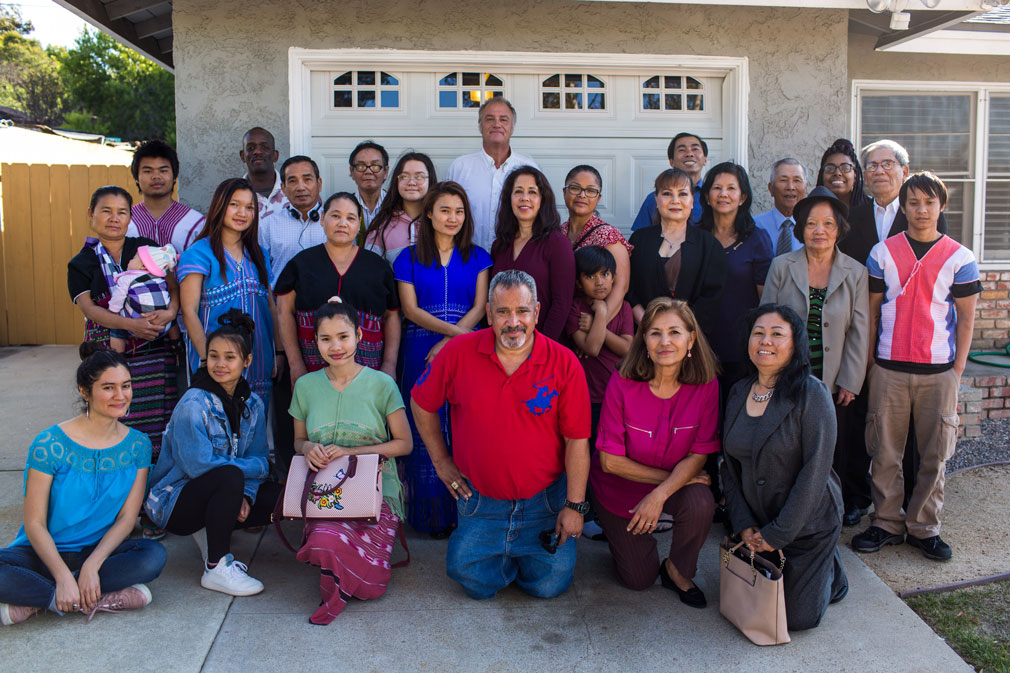
Low-income communities of color must lead when it comes to climate solutions. The climate crisis is real, is here, and affects us all, but it hits low-income communities of color first and worst. Environmental Justice (EJ) communities are at the center of the issue and we are the solution.
The Climate Justice Working Group defines climate justice as: “ensuring that the people and communities who are least culpable in the warming of the planet, and most vulnerable to the impacts of climate change, do not suffer disproportionately as a result of historical injustice and disinvestment”. Unfortunately, the impacts of climate change are disproportionately felt by low-income communities of color, and it is these same communities who “have been kept out of the global processes to address climate change” (Indigenous Environmental Network, North America).1 As a result, Climate Justice affirms the rights of indigenous people and communities most affected by climate change to lead with the solutions. EJ communities represent and speak for themselves.
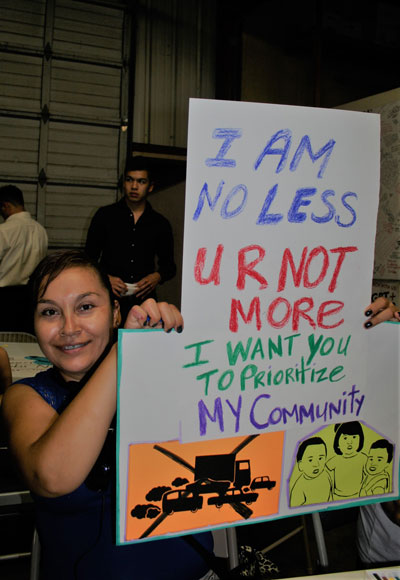
Llesenia Cevallos at the Transportation Justice Poster Making Workshop, 2015
Climate scientists predict significant changes in the San Diego region, like extreme heat, water shortages, drought, increased wild fire intensity and frequency, increased air pollution, sea-level rise and coastal flooding. The effects of climate change hit first and worst in EJ communities such as Barrio Logan, City Heights and National City. The effects are magnified because these neighborhoods house the largest sources of pollution and are already burdened by inadequate infrastructure, limited transportation options, and poor economic opportunities.
EHC’s Climate Justice Campaign works to ensure that the residents of Barrio Logan, City Heights and National City are able to speak for themselves and advance climate policies at the local, regional, state levels.
Campaign Core Elements:
1. Start Here, Star Now: An Environmental Justice Assessment of the San Diego Climate Action Plan. The prioritization of Environmental Justice Communities for climate related investments is key to real climate solutions. When cities advance environmental justice, everyone benefits.
2. Transportation Justice. Transformation of the San Diego region into a mass transit paradise where EJ community residents will not have to own a car to access jobs, go to the doctor, go to school and take care of their basic needs. Mass transit is the way.
3. Energy Democracy. Organizing to ensure investments in renewable energy are achieved for residents of low-income communities of color. Renters want solar too.
1 Indigenous Environmental Network, North America, et al. Bali Principles of Climate Justice (2002) https://www.ejnet.org/ej/bali.pdf




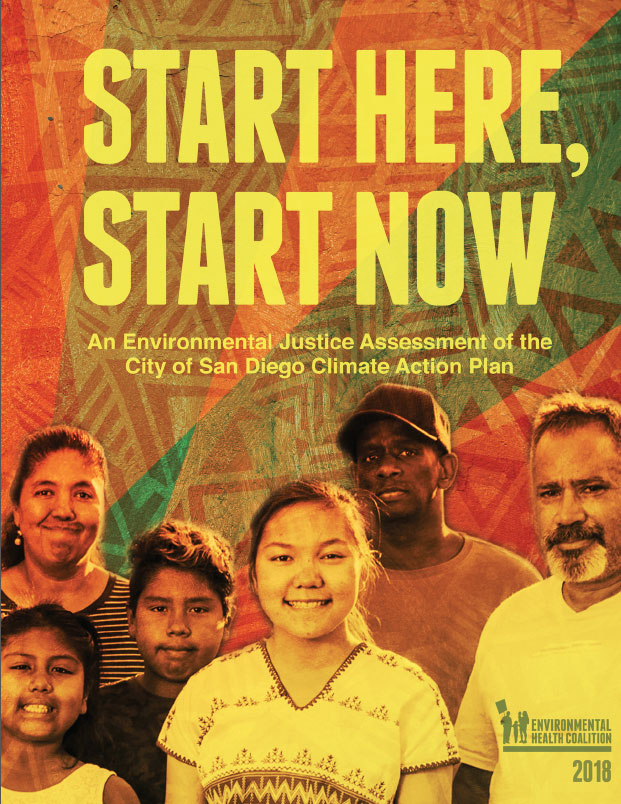 Divided into six sections,
Divided into six sections, 

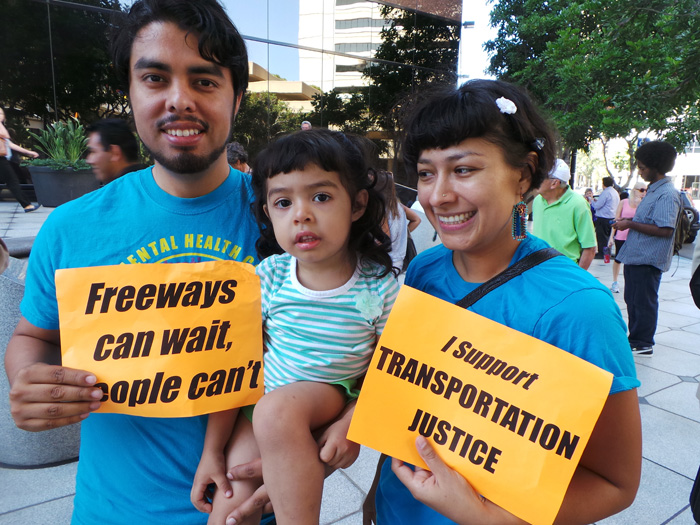 We all need to move. How we get from place to place is deeply connected to our quality of life. Unfortunately, not all communities have the same access to healthy, safe, reliable and affordable transportation options, such as public transit and biking and walking paths. That means some people don't have access to the same quality of life, just because of where they live.
We all need to move. How we get from place to place is deeply connected to our quality of life. Unfortunately, not all communities have the same access to healthy, safe, reliable and affordable transportation options, such as public transit and biking and walking paths. That means some people don't have access to the same quality of life, just because of where they live. 
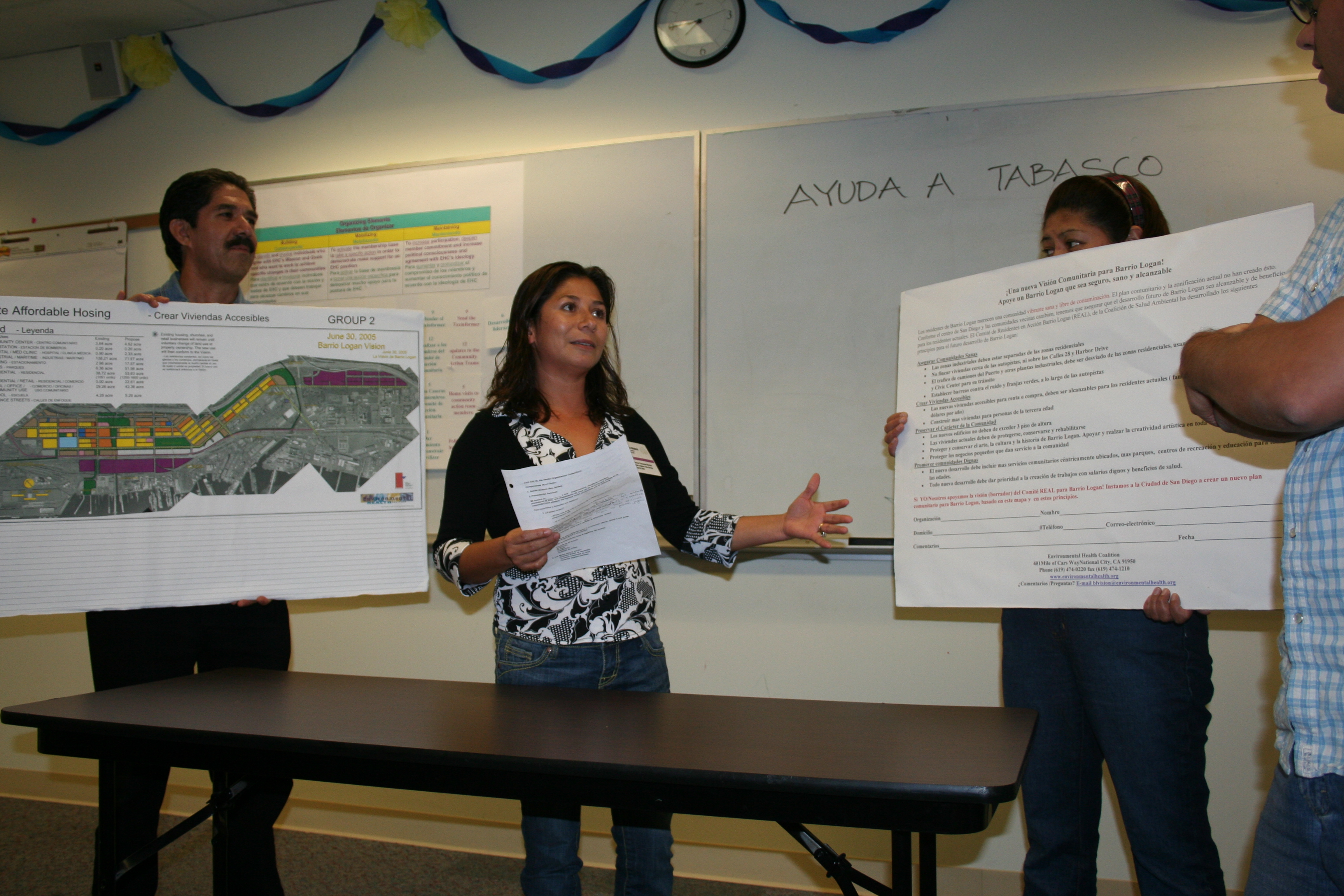 Authentic community involvement in every aspect of community planning and visioning leads to better outcomes that respect neighborhoods and their residents. EHC’s core strategies for all our efforts include community organizing and policy advocacy, which we combine with grassroots leadership development, research and communications to implement each strategic plan. To ensure that the community’s voice is heard, EHC employs the following tactics:
Authentic community involvement in every aspect of community planning and visioning leads to better outcomes that respect neighborhoods and their residents. EHC’s core strategies for all our efforts include community organizing and policy advocacy, which we combine with grassroots leadership development, research and communications to implement each strategic plan. To ensure that the community’s voice is heard, EHC employs the following tactics: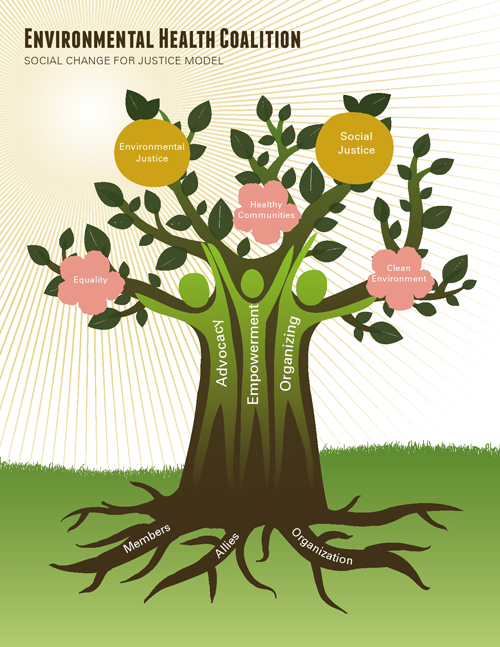
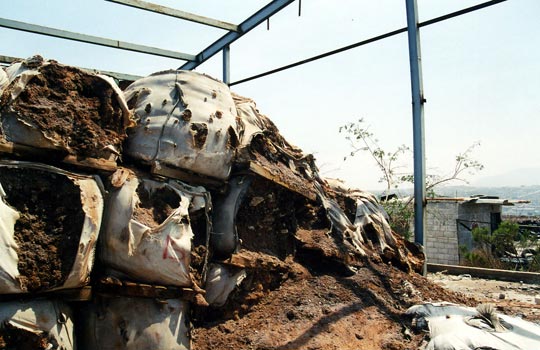 With corporate globalization, trade increased along the U.S.-Mexico border and so did pollution. However, trade agreements like NAFTA fail to hold polluting corporations responsible or to provide resources for environmental protection.
With corporate globalization, trade increased along the U.S.-Mexico border and so did pollution. However, trade agreements like NAFTA fail to hold polluting corporations responsible or to provide resources for environmental protection.